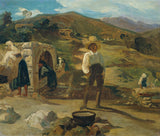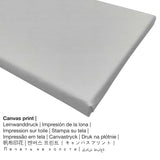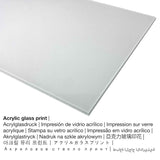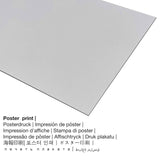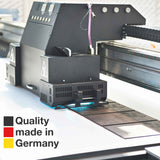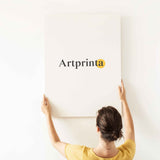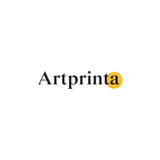What does the original description of the Belvedere say about this work of art from the painter and university teacher Carl Rahl? (© - Belvedere - www.belvedere.at)
Born in Vienna in 1812 Karl Rahl had turned at a young age of history painting, scoring in the 19th century the most important representatives of this subject. After his education at the Vienna Academy of Fine Arts, as well as study trips to Munich and Stuttgart, he was the end of 1836 in Rome where he lived with few interruptions until 1850th The reason for this move was to meet the desire, the works of the Italian Cinquecento painting in the original and to study. The number of portraits and paintings with historical, mythological and allegorical content that Rahl in Rome (and then in the years in Vienna) created is substantial, their content and titles by listing his works in various publications mostly known. The more interesting it is, the painter with the present painting from another site to get to know. The illustration shows a southern mountain range, are engaged in women with laundry and bleaching. In the middle of the picture is a young man who looks straight out of the picture at the viewer. He is in his shirtsleeves and wearing a big straw hat on his head, obviously has nothing to do with the women's group, but represents a pose to be held against the beautiful landscape - as if he would stand in front of a photographer. Where this scene plays is not known with certainty but it is likely that it originated on one of the hikes in the surrounding area of Rome. The sitter could be a colleague or a friend of the painter thus, took part in this trip. The small format, but above all let the sketchy version assume that the image was begun on site and completed. Despite the rapid Malvorganges the spatial depth of view is given, as well as the distribution in proportion to the figures. Rahl relied solely on the brush, the pre-mixed on the palette colors sat side by side and specifically considers gave form and shape. Fleet, rapid strokes characterize scenery and figures (for the shadow of the man sufficed a bar quickly back and retracted), thickly applied, light shades give the impression that the sunlight model the forms. This view provides, together with the two small landscape sketches, which owns the Austrian Gallery Belvedere, an important contribution to early creative Rahl. It is interesting to realize that the history painter Rahl, if only for a short time, the problem of conversion of light and air shows in the picture an open mind. [Source: Grabner, Sabine: Carl Rahl. Italian countryside, in: Recent Acquisitions. Master of Heiligenkreuz to Krystufek, exh. Cat. Austrian Gallery Belvedere, Vienna f 15.09.-21.11.1999 (temporary exhibition of the Austrian Gallery, 224), p. 48]
Ozi ndabere ngwaahịa
In 1850 Carl Rahl created the 19th narị afọ work of art. The original of the piece of art has the following size of 32 x 38 cm. Oil on canvas was applied by the Austrian artist as the technique for the piece of art. The work of art is part of the nke Belvedere nchịkọta nka dijitalụ na Vienna, Austria. Site n'ikike nke - © Belvedere, Vienna, nọmba ngwa ahịa: 9522 (nwere ikike: ngalaba ọha). The creditline of the artpiece is: purchase from private property, Vienna in 1998. Further, the alignment is in landscape format na nwere akụkụ ruru nke 1.2: 1, nke pụtara na ogologo bụ 20% ogologo karịa obosara. Carl Rahl was a male painter, university teacher, whose art style can primarily be classified as Historicism. The European painter lived for 53 afọ and was born in the year 1812 in Vienna, Vienna state, Austria and deceased in 1865 in Vienna, Vienna state, Austria.
Họrọ ngwa ngwaahịa masịrị gị
Maka mbipụta nka ọ bụla anyị na-enye ụdị nha & ihe dị iche iche. Nhọrọ ndị a dị maka n'otu n'otu:
- Mpempe akwụkwọ ederede (akwa akwa akwa): A poster is a UV printed cotton canvas with a slightly rough surface finish, which reminds the actual version of the masterpiece. Please bear in mind, that depending on the absolute size of the canvas poster print we add a white margin of around 2-6cm round about the print motif to facilitate the framing with your custom frame.
- Mbipụta kanvas: A canvas print, not to be confused with an artwork painted on a canvas, is a digital image printed on a UV direct printing machine. Hanging a canvas print: Canvas prints are relatively low in weight, meaning that it is easy and straightforward to hang the Canvas print without the help of additional wall-mounts. A canvas print is suited for all types of walls.
- Mbipụta ọla (aluminium dibbond): An Aluminium Dibond print is a material with an impressive effect of depth. The Direct Print on Aluminum Dibond is the perfect introduction to fine reproductions with aluminum.
- Mbipụta enyo acrylic: An print on acrylic glass, which is sometimes referenced as a an art print on plexiglass, will turn your favorite original into beautiful décor and is a viable alternative option to canvas and aluminidum dibond fine art replicas. The work of art will be made with modern UV print machines. The plexiglass protects your selected art replica against light and external influences for many decades.
Tebụl onye na-ese ihe
| Aha onye nka: | Carl Rahl |
| Aha ndi ozo: | rahl karl, rahl c., rahl karl, rahl k., karl rahl, c. rahl, Rahl Carl, Carl Rahl |
| okike onye nka: | nwoke |
| Obodo onye nka: | Ọstrịa |
| Ọrụ: | onye nkuzi mahadum, onye na-ese ihe |
| Mba onye si: | Austria |
| nhazi ọkwa: | omenkà nke oge a |
| Ụdị nke onye na-ese ihe: | Akụkọ ihe mere eme |
| Nwụrụ anwụ: | 53 afọ |
| Afọ ọmụmụ: | 1812 |
| Amụrụ na (ebe): | Vienna, Vienna steeti, Austria |
| Afọ ọnwụ: | 1865 |
| Obodo ọnwụ: | Vienna, Vienna steeti, Austria |
Nkọwa ahaziri nke mpempe nka
| Aha nka: | "Italian ime obodo" |
| Nhazi: | sere |
| Okwu mkpokọta: | nkà nke oge a |
| Century: | 19th narị afọ |
| Afọ nka: | 1850 |
| Afọ nka: | 170 afọ |
| Usoro izizi: | mmanụ na kwaaji |
| Nha izizi (ọrụ nka): | 32 x 38 cm |
| Ụlọ ihe ngosi nka / ebe: | Belvedere |
| Ebe ngosi nka: | Vienna, Austria |
| website: | Belvedere |
| Ụdị nka nka: | ngalaba ọha |
| Site n'aka: | © Belvedere, Vienna, nọmba ngwa ahịa: 9522 |
| kreditline ọrụ nka: | zụta n'ụlọ nkeonwe, Vienna na 1998 |
Banyere akụkọ
| Nkewa ngwaahịa: | mmepụta nka |
| Mmeputakwa: | dijitalụ mmeputakwa |
| Produzọ mmepụta: | Mbipụta UV ozugbo (mbipụta dijitalụ) |
| Nlụpụta: | German mere |
| Ụdị ngwaahịa: | mmepụta ihe na-achọ |
| Ojiji ngwaahịa: | ụlọ mmepụta ihe nka, foto mgbidi |
| Nhazi: | nhazi odida obodo |
| Ụdị anya: | 1.2: 1 |
| Ntụgharị nkọwa akụkụ akụkụ: | ogologo bụ 20% ogologo karịa obosara |
| Akụrụngwa ị nwere ike ịhọrọ: | Mbipụta iko acrylic (nke nwere ezigbo mkpuchi iko), mbipụta akwa akwa, mbipụta akwụkwọ mmado (akwụkwọ kwaaji), mbipụta ọla (aluminium dibbond) |
| Canvas dị n'elu ihe nrịbama (mbipụta kanvas) nha dị iche iche: | 60x50cm - 24x20", 120x100cm - 47x39", 180x150cm - 71x59" |
| Acrylic glass print (nwere ezigbo mkpuchi iko) nhọrọ: | 60x50cm - 24x20", 120x100cm - 47x39", 180x150cm - 71x59" |
| Mpempe akwụkwọ mmado (akwụkwọ kwaaji) nha: | 60x50cm - 24x20", 120x100cm - 47x39" |
| Mpempe akwụkwọ Dibony (ihe alumnium) nha dị iche iche: | 60x50cm - 24x20", 120x100cm - 47x39" |
| ụba: | na-enweghị etiti |
Important information: We try our utmost in order to depict our art products as accurately as possible and to showcase them visually in our shop. At the same time, the colors of the printed materials and the imprint may diverge marginally from the representation on your device's monitor. Depending on your settings of your screen and the nature of the surface, not all colors can be printed as exactly as the digital version. Given that all the fine art prints are printed and processed manually, there may also be slight variations in the motif's exact position and the size.
© Nwebiisinka - ikike ọgụgụ isi nke - Artprinta.com

